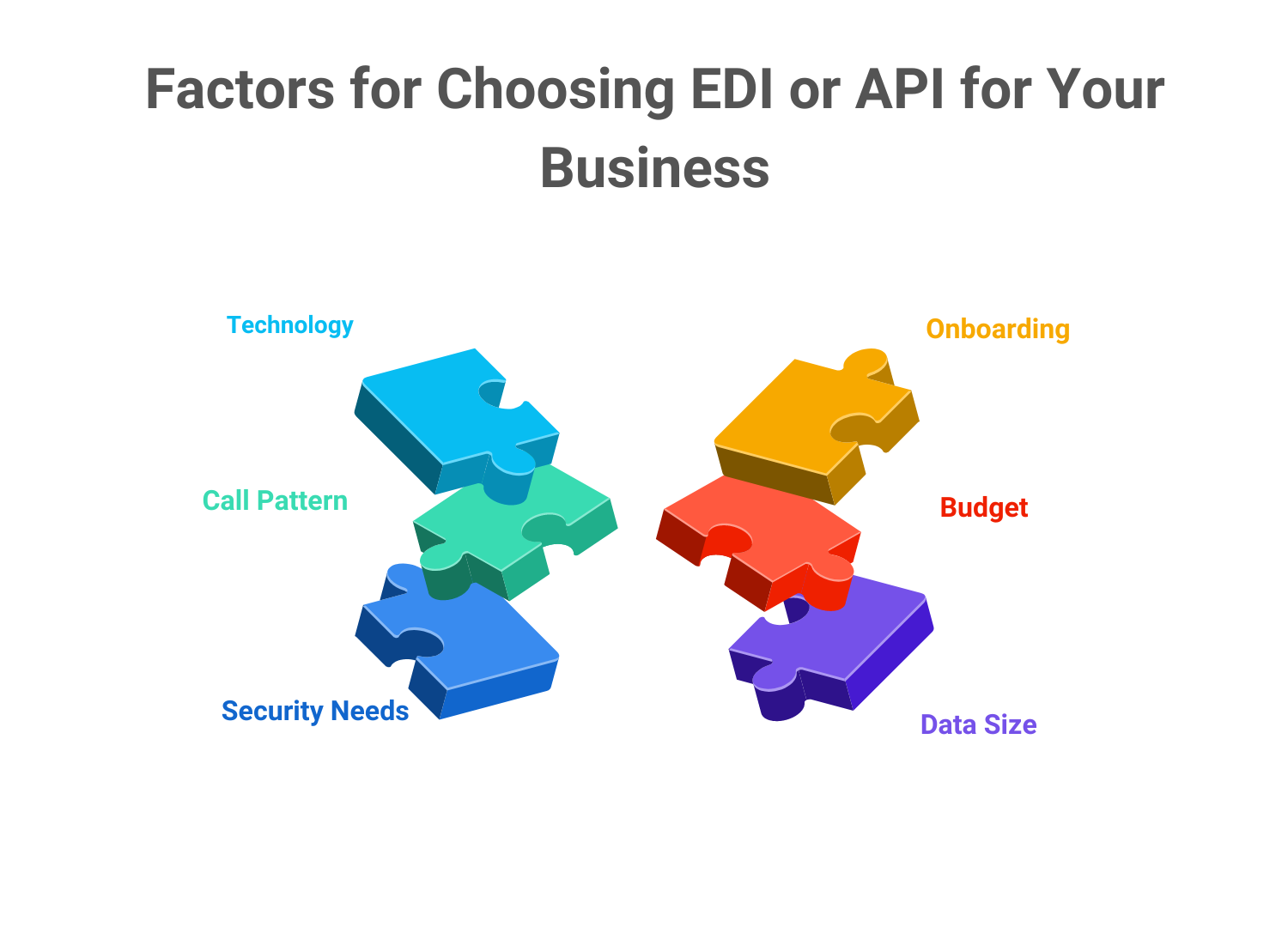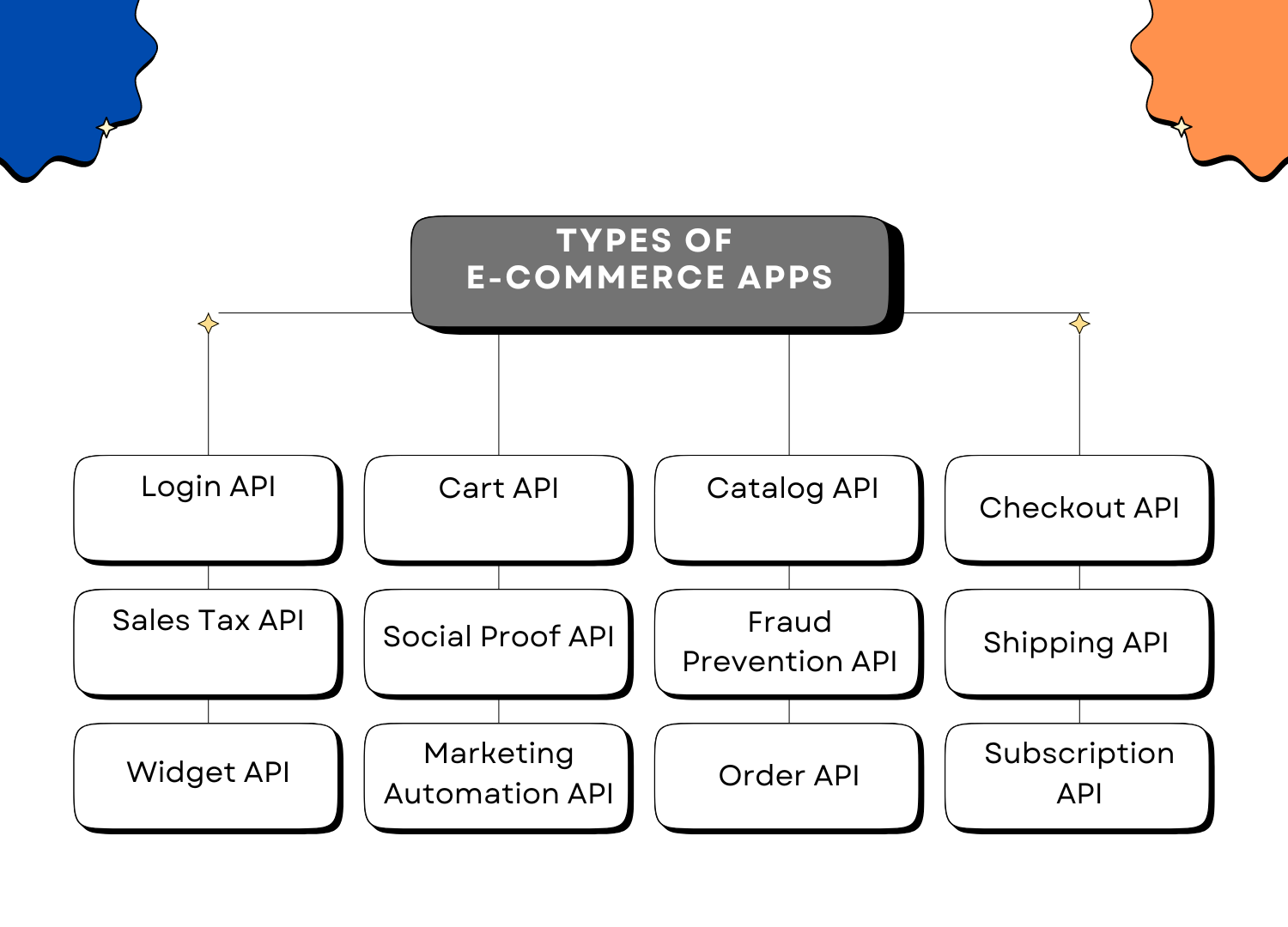Table of Contents
You’ll need digital solutions as your organization grows to standardize your communications and boost productivity. Numerous technological options are available to help enhance these logistics. Since its founding more than 50 years ago, electronic data interchange technology has not seen any significant advancements. Are there better options for trading and conducting business now that new technologies like APIs are available? Despite being the industry standard for document exchange for many years, application programming interfaces, or APIs, are becoming more and more popular as an EDI substitute. The increasing use of APIs as a means of trading partner communications in supply chains has prompted corporate executives in charge of assessing their existing B2B initiatives to learn more about the distinctions between EDI and API integration.
The most widely used solutions are EDIs and APIs. According to Business Wire, 65% of companies use APIs, and 60% to 80% of companies use EDIs, according to Global News Hire. Large data sets can be transmitted by both, facilitating fast information sharing across companies. However, the fact that EDI vs API is very real We will examine the distinctions between EDI vs API in this blog post. After that, you can choose the technology that would work best for your company’s supply chain solutions.
Reduce Costs and Errors By Integrating EDI
From Paper to Pixel: Understanding EDI
EDI is an effective way to transfer data to and from other businesses. Electronic data interchange specifies the format and content of a purchase order, invoice, shipping notice, and other documents. EDI documents will be sent or received from a trading partner. Standardized formats eradicate the manual entry of data and paper-based exchange, hence making corporate procedures more efficient and reducing the occurrence of errors.
EDI has been instrumental for industries like retail & e-commerce, suppliers & manufacturing, logistics & supply chain management, and healthcare in speeding up, increasing the accuracy level, and making B2B transactions more efficient.
Probably the biggest advantage of EDI services is the ability to establish links between different computer systems without any problems, thus allowing companies to easily exchange information with business partners regardless of the hardware or software used. This interoperability creates collaboration, making a business environment more agile and interconnected.
How do EDIs operate?
Let’s examine the operation of EDI.
Electronic data interchange replaces manual processes and paper documents to enhance commercial interactions. Consider a company like Target that sells products to consumers. They have to collaborate with suppliers to fill their shelves with merchandise. Before the existence of EDI, purchasers had to give verbal orders to suppliers over the phone. Subsequently, the supplier was required to manually input the order into a system and produce an invoice for the target to receive.
The development of EDI solutions greatly enhanced this procedure. EDI software now allows Target and its suppliers to communicate with one another. Their two computers can securely connect thanks to EDI-standardized communication protocols.
An order placed by Target can be read by the supplier’s computer, which will then produce an invoice. The invoice can be read and processed by Target’s computer as well.
As you can see, EDI has made business-to-business communication easier. Still, they’re not flawless. Let us examine the benefits and drawbacks of each.
Benefits of EDI
For supply chain logistics and business-to-business interactions, EDI has various advantages. Here are a few benefits of EDI:
- Increased effectiveness: EDI software helps reduce human error risk by doing away with manual data entry. They expedite shipment and processing times as well.
- Lower expenses: An EDI is a paperless system that lowers mail, print, and ink expenses. To cut labor expenditures, the responsibilities related to these duties can also be abolished.
- Heightened safety: EDI software solutions make use of sophisticated security standards including encryption. By protecting data during transit, this significantly reduces the possibility of cyberattacks.
EDI Drawbacks
Let’s examine a few drawbacks of utilizing EDIs in addition to their many benefits.
- Startup expenditures: It costs a fair amount to implement EDI. The initial outlay for the necessary software, hardware, and staff training is substantial. It also takes a lot of time—it May take three to six months for the technology to be operational. A professional developer is also needed to create and manage the system for EDIs.
- Uniformity: We are aware that standard communication protocols are a requirement of electronic data interchange solutions for all parties. This may limit your company’s capacity to modify its IT infrastructure.
- Difficulties with integration: The late 1960s saw the invention of Electronic data interchange. Its technology is out of date and cannot be updated to work with more recent technologies. This inhibits businesses from utilizing the technology when they want to invest in newer technologies. It also makes it challenging to integrate the technology with other uses.

Typical Use Cases of EDI
There are various uses of Electronic data interchange. Let’s take a look at some of the common uses and examples of EDI integration.
Supply Chain Management
EDI integration services make sure the supply chain functions properly and that goods are easily transported from the producer to the customer. By speeding up transactions and decreasing human data entry, it saves firms time.
Businesses can track inventories and deliveries in real-time and have more visibility and control over their supply chain activities thanks to the EDI integration methods. Moreover, EDI automation makes it possible for businesses to exchange electronic documents with external partners in an effective manner using defined protocols, guaranteeing on-time and correct orders and delivery.
Order Processing
You may quickly and easily exchange order papers in a standard format with your business partners by using electronic data interchange solutions. By doing away with manual procedures, processing times are shortened and mistake risk is decreased. Workflow automation is another benefit of automated EDI, which helps you manage your supply chains more effectively.
Inventory Control
Businesses can enhance the administration of their inventory documentation by implementing EDI software. Additionally, EDI automation offers an affordable solution for managing your inventories and tracking shipments in real-time. This lessens the chance of stockouts and lowers the possibility of financial loss from overstocking goods.
Logistics and Shipping
You can employ automated technologies to expedite shipping and logistics by establishing direct EDI connections. Without having to contact or email, you can effortlessly track shipments and get delivery time updates. You can also take advantage of useful automation tools like batch processing and B2B connectivity options.
Client Support
Businesses can increase efficiency and reduce response times by streamlining their customer service procedures through EDI integration services. This makes it possible for businesses to smoothly integrate their customer service workflows with their business operations, guaranteeing that EDI solution providers can quickly and effectively access the information they need, including order status or inventory levels.
API: What is it?
Now that we know what EDI is, let’s take a look at What is API. APIs facilitate communication between disparate software systems by acting as digital bridges. Although the term “APIs” is used broadly to refer to various situations where software communication is crucial, the context most pertinent to this article is when bridging the gap between software systems utilized by different businesses.
API integration serves as a collection of tools and protocols that enable systems to communicate with one another in the context of business transactions, promoting the efficient and standardized sharing of information. Similar to Electronic Data Interchange for document exchange, APIs facilitate business-to-business communication by giving software programs a standardized interface through which to interact and exchange data.
APIs provide organizations with a flexible and dynamic communication channel that goes beyond the constraints of conventional point-to-point connections. Because of their scalability and flexibility, API integration is essential for digital transformation projects because it lets businesses develop and adapt in a world where connections are becoming more and more frequent.
How do APIs operate?
Different software programs can interact with one another by exchanging data or developing unique functionalities thanks to API integration. The employment of a common language by various systems makes integration easy and effective. Let’s say you wish to create an app for meal delivery. Your program needs to be able to create connections, handle different delivery drivers, and integrate with your partners’ websites for their menus.
There are several advantages to API integration into the operations of your program. The ordering and shipping procedures will be expedited, and the API will decrease errors to increase client satisfaction. This technology also allows you to grow your business by collaborating with other food suppliers.
API Benefits
Application programming interfaces have many benefits that organizations and developers may take advantage of. The main benefits are as follows:
- Preserving time: API integration speeds up workflows and automates repetitive tasks, which decreases development and deployment time.
- Effective information: APIs can gather data more widely because they are integrated with other systems. Users do not need to manually upload data for APIs to function. Alternatively, as information is gathered, APIs can update the data and records.
- Adaptability: Platform or language limitations do not apply to APIs. APIs allow applications to communicate uniformly with one another so that they can be integrated with other systems.
- Flexibility: Multiple services can be integrated via APIs simultaneously. This lets companies expand without having to worry about whether their technology will keep up.
- Inventiveness: Developers can use pre-existing data to create new applications by utilizing APIs’ capacity to gather data.
API Drawbacks
There are several disadvantages to take into account despite the many benefits of utilizing API integration. Below, let’s examine a few of them:
- Dangers to security: If APIs aren’t created securely, they may lead to data breaches, access to private information, and other issues.
- Dependent on outside parties: Due to their integration with third-party apps, APIs may be impacted by third-party problems.
- Intricacy: APIs are sophisticated technological tools. They can raise a company’s technical expenses because they need a highly specialized developer.
- Compatibility and versioning: While APIs don’t depend on a language, they do change over time, so businesses must update their apps to stay compatible.
Typical Uses for API Integration
Several business functions can benefit from API integration. Here are a few typical use cases and examples of API integrations:
ERP Integration
Similar to Integrating EDI with ERP business applications and the Enterprise Resource Planning (ERP) tool are also connected using ERP integration APIs, often through an ERP Integration Platform. This facilitates the real-time data flow between the ERP and other technologies including marketing automation tools, e-commerce platforms, PIM, CRM, and EDI databases.
Social media integration
Different companies use social media platforms to build relationships with their customers and to promote the products of their company. A business can share content, authenticate users, and even access social media data directly in their applications after integrating social media networks such as Facebook, Twitter, and LinkedIn using API integration.
Integration to the payment gateway
For any eCommerce company, integration with payment gateways is necessary. This is to ensure the safe processing of online payments. Easy and secure transactions are possible for businesses through the integration of payment gateways. These include PayPal, Stripe, or Braintree for a seamless checkout experience for clients.
CRM integration
CRM systems are the ones that administer customer relationships and sales activities in the background. An API integration allows CRM systems like Salesforce, HubSpot, or Zoho CRM to communicate with other applications in an end-to-end process, thus allowing the creation of leads, management of the sales pipeline, or even the automatic synchronization of client datasets.

What distinguishes EDI and API from one another?
Despite their shared functions, EDI vs API differs significantly in terms of security, onboarding, costs, and applications.
Safety
With integrated trading partners, EDI security offers safe communication and data sharing that guarantees privacy and guards against illegal access. It accomplishes this by using encryption techniques and well-established security processes as precautions.
API also supports secure communication, albeit the degree of security varies depending on its implementation. To secure data, API security uses encryption, access limits, and authentication. Compared to EDI security, the security protections may be more adaptable and adjustable, but not all APIs are made equal. Stated differently, certain systems are weaker than others.
Onboarding simplicity
In an Electronic data interchange context, onboarding new trading partners can be difficult and time-consuming. Different EDI transaction standards and requirements may apply to each partner, necessitating mapping and customization solutions for compatibility.
On the other hand, APIs typically provide a simpler onboarding procedure. Because APIs usually adhere to defined protocols, integration, and compatibility, it reduces the issues. Partners can begin utilizing the API sooner and comprehend the integration needs more quickly when the API standards are well-documented.
Price
An Electronic data interchange system might be expensive to implement and maintain upfront. Specialized personnel, hardware, EDI software, and continuous maintenance are needed for the process.
Compared to EDI, APIs typically offer cheaper entry costs. Since many APIs are based on already-existing web technologies, they are affordable and easily accessible. However, there can be expenses related to using APIs, including rate limitations set by API providers or API gateway fees.
Stay Ahead of the Game With Our Custom EDI Solutions
Selecting the Right Infrastructure for Your Company
The best choice between EDI vs API will rely on the apps and trading partners in your ecosystem. Assess preferences, capacities, and in-the-moment interactions to ascertain the ideal supply chain infrastructure.
The industry standard for structured data interchange in supply chains is Electronic Data Interchange. EDI has long been in place and enables companies to effectively and efficiently share documents with trading partners. Including purchase orders and invoices. In the meantime, applications, systems, and services can interact with one another more dynamically thanks to APIs, which provide a more adaptable and real-time approach to data interchange and system integration. But keep in mind that EDI and API can work well together to provide a potent mix for smooth integration and data sharing.
To make it easier, here is a comparison table for EDI vs API
Integrating APIs and EDI: A Unified Data Exchange Method
Let’s explore the possibility of combining API and EDI into a single data exchange plan. Integrating EDI And API results in streamlining of EDI process. This opens up the possibilities for:
- Automatic data transmissions
- Securing a company’s place in the market through a variety of trading partners
- Increasing the consistency and accuracy of data
- Ensuring accurate data across various client interactions
- Using automated techniques to decrease data entry errors.
The transfer of data is between business partners using both EDI and API. Whereas API provides flexibility and real-time access, Electronic data interchange is renowned for its dependability and compliance. Knowing the advantages and disadvantages of each data transmission technique will assist companies in selecting the best strategy for their requirements.
Businesses and their business partners can benefit from increased scalability and flexibility by using a single system that can manage both EDI consultants and API partners.
- Quickly adapt to changing operational requirements
- Integrate new systems without causing too many problems.
- Simplify the process of integration.
- Boost general business productivity
- Moreover, a combination of EDI and API decreases cost.
Increased Consistency and Accuracy of Data
Integrating EDI and API results in better data validation procedures. EDI providers guarantee the accuracy of data before transmission or additional processing. By creating a central source of truth for data transfers, a combined EDI and API strategy reduces data discrepancies.
Implementing hybrid Electronic Data Interchange improves partner visibility through more effective data transfers and reduces human data entry, producing faster business operations and more accurate data.
Optimizing Automation and Integration to Simplify Business Procedures
APIs make it possible for EDI and API integration to happen smoothly, which improves operational efficiency by facilitating more effective connections and communication between various software programs. By automating end-to-end data flows, integrating EDI with APIs minimizes the need for human input and lowers data interchange error rates.
Organizations can generate strategic value, optimize business operations, and enhance revenue by expanding into new markets through the implementation of APIs that streamline integration and automation processes.
Flexibility and Scalability
Businesses may quickly integrate new technologies and adjust to operational changes by using a unified approach to EDI and API data interchange, which promotes an IT architecture that is responsive and flexible. A company can expand through the smooth addition of new sales channels or services by implementing a hybrid data exchange strategy that combines Electronic Data Interchange and API.
Businesses may manage growing data quantities and user expectations without sacrificing performance or reliability by combining an EDI and API environment. Scalability is provided by cloud-based integration solutions, which enable businesses to modify their integration requirements as needed. Additionally, the flexibility of APIs and the standard format of Electronic Data Interchange allow for customization to meet the demands of various trading partners and applications. The combination of EDI and API technologies offers a flexible approach to data integration, supporting both conventional B2B exchanges and contemporary, dynamic company needs.
Efficiency and Cost Savings
Streamlining data interchange technology can save expenses and increase productivity for enterprises. Streamlining data-sharing procedures can help firms save a lot of time and money.
For example, in a healthcare institution that uses several systems for patient administration and billing, a unified data interchange solution can save time and resources needed to manage patient data. Streamlining lowers administrative expenses, increases productivity, and lowers the possibility of mistakes.
Ready to Modernize Your Business? Start With EDI.
In summary
Both EDI and API connectivity have special benefits and are appropriate for various business requirements. For conventional B2B transactions, Top EDI providers offer a reliable and standardized approach; however, for contemporary applications, APIs offer flexibility and real-time capabilities. To fully utilize the advantages of these technologies, top EDI companies must comprehend how they differ and how they are comparable. Furthermore, more intelligent and effective business processes are possible by the use of AI in EDI and API systems. In an increasingly digital world, organizations may maintain their competitiveness and spur growth by implementing these cutting-edge integration solutions.




![10 Top Internet of Things (IoT) Consulting Companies in the USA [2025]](https://www.a3logics.com/wp-content/uploads/2024/01/10-Top-IoT-consulting-companies-in-USA-2024.webp)

